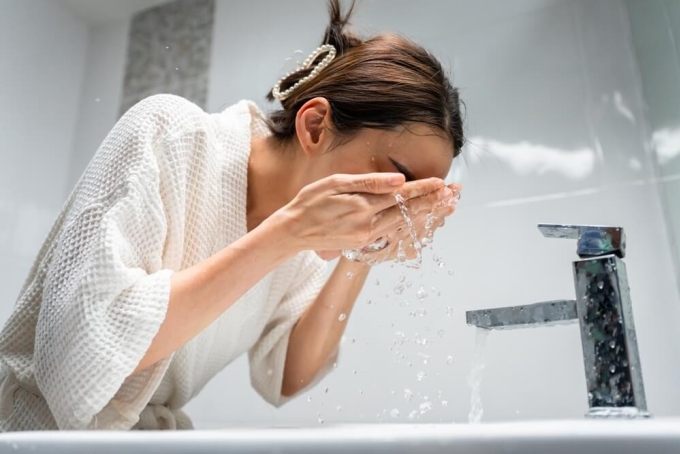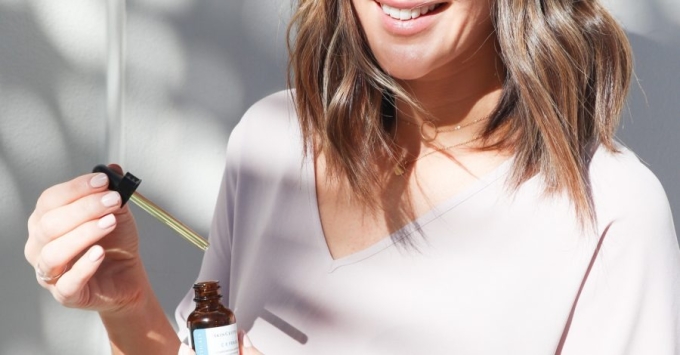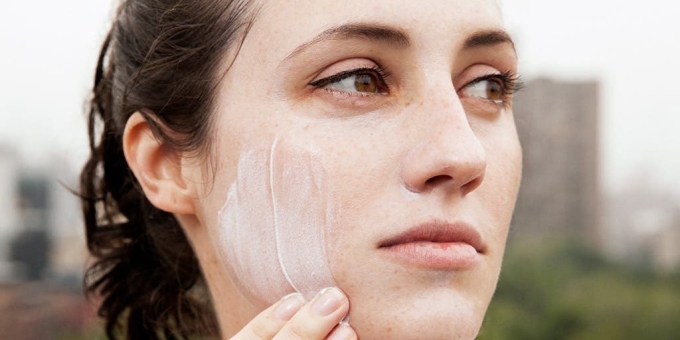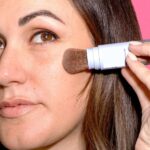
Cleanser is an optional step in the morning if your skin is not overly oily.
“Those with oily skin should cleanse both morning and night to balance pH levels, but we recommend that those with dry skin only use a cleanser at night to maintain moisture,” says aesthetic nurse Rachel Gallo. If you have a morning workout routine, use a cleanser post-exercise to ensure your skin is clean, clear, and free from sweat and excess sebum.
While cleansing routines vary depending on skin type and condition, the following three steps are generally recommended for all skin types and most age groups.
1. Antioxidants
Your skin is constantly exposed to aging factors that can lead to premature signs of aging, such as wrinkles, crow’s feet, sagging skin, and pigmentation. Dermatologist Shari Sperling recommends using a serum with antioxidant properties in the morning to combat the effects of free radicals. “A serum designed for daytime use – containing antioxidants such as vitamin C, green tea, or resveratrol – should be applied in the morning to help protect your skin,” she says.

Vitamin C serum is one of the recommended additions to your daytime skincare routine to boost protection against UV damage.
2. Moisturizer
Moisturizing is the next essential step in your skincare regimen. This step helps replenish lost moisture from the night before and locks in hydration throughout the day. Moisture is a key protective factor for the skin, creating an optimal environment for healthy skin and effective self-repair.
Rachel Gallo suggests: “In the morning, opt for a lighter-weight moisturizer to avoid a greasy feel and to ensure your makeup applies smoothly.”
3. Sunscreen
Skipping sunscreen can render all your previous efforts meaningless. This step is crucial in shielding your skin from UV damage – the fastest-aging factor for the skin.

Neglecting sunscreen can undo all the hard work of your previous skincare steps.
“Your final step is always sunscreen, and do this all year round. SPF 30 or higher is ideal, and apply it before going outdoors about 15-20 minutes beforehand to allow for absorption,” advises dermatologist Shari Sperling.
What Happens When You Apply Vitamin C Serum at the Wrong Time?
Introducing the ultimate guide to maximizing the benefits of your products: “Timing is Everything: Optimizing Product Usage for Peak Performance.”
Many of us have, at some point, experienced the disappointment of a product not living up to its promised potential. Often, the issue isn’t the product itself, but rather the timing and context in which it’s used. This guide will empower you to harness the full potential of your purchases, ensuring you get the most bang for your buck.
The Ultimate Guide to Green Tea Skincare: 4 Recipes to Transform Your Complexion
Matcha has been a staple ingredient in many natural skincare routines, and for good reason. This powerhouse ingredient is known for its ability to transform dull and uneven skin into a radiant, smooth canvas. With its high antioxidant content and anti-inflammatory properties, matcha provides a host of benefits that promote healthy, glowing skin.
Can Powder Sunscreen Replace Traditional Sunscreen?
Introducing the latest innovation in sun protection: a powder sunscreen that promises to revolutionize the way we protect our skin from the sun’s harmful rays. With claims of overcoming the drawbacks of traditional cream-based sunscreens, this powder sunscreen has sparked curiosity among consumers. But can it truly replace our trusted creams and lotions?



































